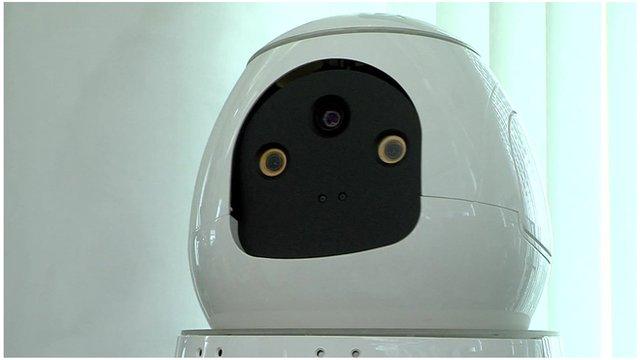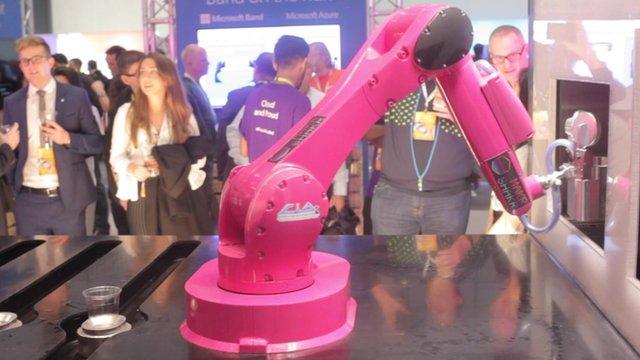Is it time to expect more than dance moves from robots?
- Published
The prototype Jibo robot lacks many of the abilities promised for the final model
I, like many other busy, working parents, secretly crave for someone to help out with the household chores - from persuading children to do their homework, constantly picking up an assortment of footwear from the floor, emptying the dishwasher....the list goes on.
So when, at the CES Technology show in Las Vegas earlier this month, I had a secret assignation in a hotel room with a robot dubbed as a family assistant, I was pretty excited.
I love a cute robot and Jibo, brainchild of MIT professor and social roboticist Cynthia Breazeal, has been beguiling investors and press alike since it was launched on crowd-funding platform Indiegogo last year.
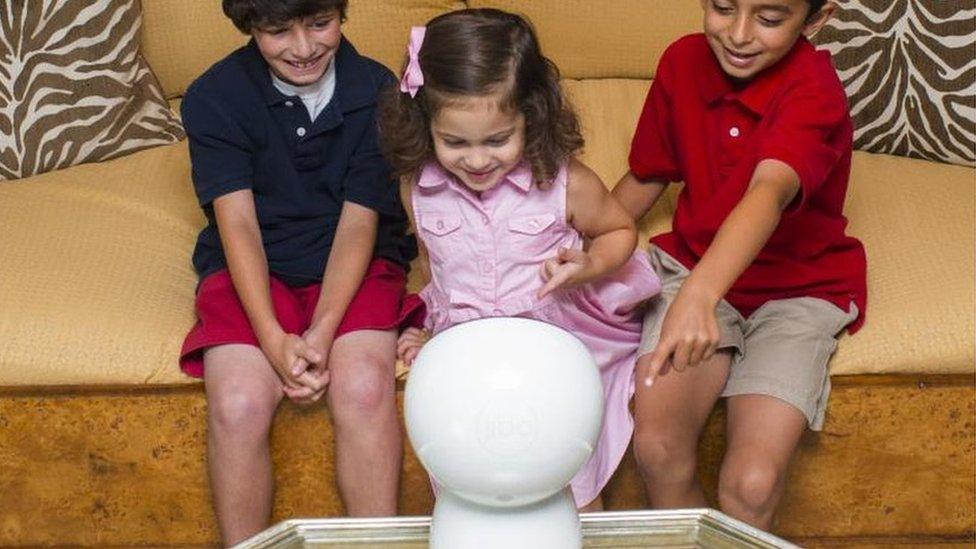
Jibo is designed to help out all members of the family
It raised $3.7m (£2.57m) and has been described by one analyst as a "game changer" - the social robot with the biggest chances of success.
Quite a lot of hype for what is essentially a stylishly designed, moving tablet but I was prepared to be impressed.
My excitement was tempered when I arrived at the swanky Las Vegas hotel suite that Jibo had taken over for the afternoon.
The demo showed Jibo dancing, which it did with something of a swagger, but nothing more. The robot remained tethered to a laptop and its human coder at all times.
Obviously I wasn't expecting it to fulfil my rather wildly optimistic wishlist but dancing would definitely not be on the collection of skills I'd have for my family assistant.
Robotic photographer
Jibo would, insisted Ms Breazeal, do far more when it launched in June but that functionality was "not ready" to show.
Its main job will be to connect families - it will recognise faces, remind busy parents of their "to do" list, take photos at family parties, read stories to the children and offer video chat to connect with the grandparents.
I asked whether giving Jibo this level of functionality was proving harder than first envisaged but, if it was, Ms Breazeal was giving nothing away, insisting it was on track for its spring shipping date.
Skype on steroids
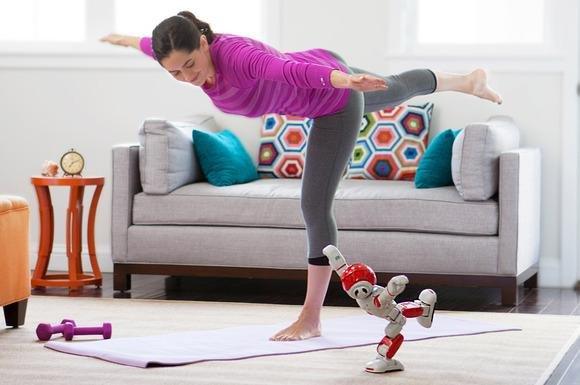
Alpha 2 doesn't just dance - it also does yoga
Making robots work is hard. I have lost count of the number of demonstrations I have been to where robots needed to be rebooted.
More often that not the demo, when it finally does work, is of - you've guessed it - a robot dancing.
To say I am over robots dancing would be an understatement - so pity the poor demonstrator at the CES booth for UBTech's Alpha 2, a human-like robot with moveable joints that can also be programmed to walk, talk and translate.
"Can I see it in action?" I asked. "Please tell me it isn't going to dance."
"Er..it can also do yoga?" came the reply.
It will be available from March and will cost $1,299 (£900).
Smart home
If robots are going to make an impact in the home, they are going to need to do a bit more - and do it reliably.
Prof Noel Sharkey, from the University of Sheffield and co-director of the Foundation for Responsible Robotics, thinks that the functionality of robots such as Jibo will quickly evolve.
"It is starting out like Skype on steroids with face recognition and tracking and a visually expressive Siri. But this is just a foot in the door. With all of its connectivity it provides great opportunity to meet consumer demands for a multitude of new apps. And many companies could follow suit to create a rapidly expanding competitive marketplace," he told the BBC.
"Such devices could easily become the core of smart homes and controllers for the internet of things: everything from game-playing companion to security guard to fridge food monitor to watching over granny or even allowing 'home visits' from the doctor."
The cuteness factor should not be overlooked, thinks Tom Austin, an artificial intelligence expert at research firm Gartner.
"At first glance, it competes with, of all things, Amazon's Echo, which is also a multi-user device, but Jibo is trying to be far less sterile and more personable while being social too."
Echo, for those not familiar, is essentially a speaker which is linked up to a voice assistant, dubbed Alexa. Users can ask it questions, shop and - following a tie-up with carmaker Ford - even ask it to open the front door when they are nearly in the driveway.
And it has one thing in its favour - it cannot dance.
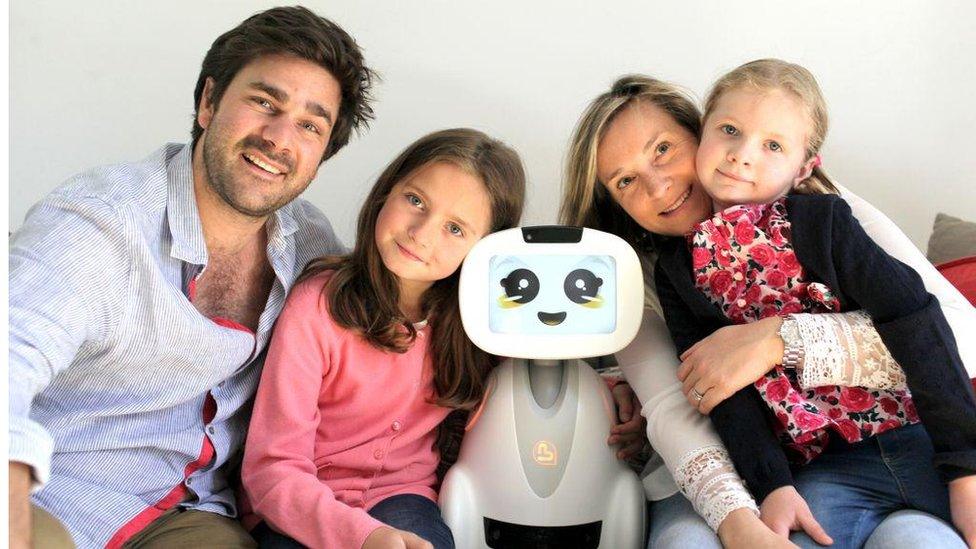
Buddy wants to be a member of the family
Blue Frog Robotics, the firm behind French home robot Buddy - which does dance - was recently interviewed by the BBC about why people would pay for a robot when much of the functionality could be performed via a tablet.
"People don't want to talk to a tablet, they want to talk to a character. It becomes another member of the family," explained chief executive Rodolphe Hasselvander.
Segway butler
Intel has recently teamed up with Segway, now owned by Chinese robotics firm Ninebot, with a proof of concept personal assistant that can also double up as a transport system.
Essentially a tablet stuck on top of a Segway, the robot is equipped with Intel's RealSense camera which provide its eyes, allowing it to navigate around the home, avoiding collisions.
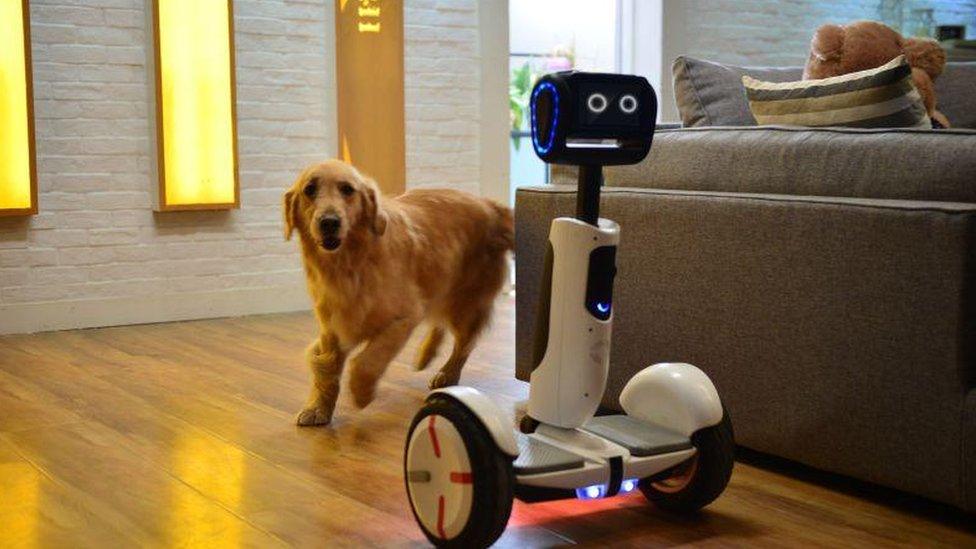
Intel provides the eyes for the Segway robot, via a camera with depth perception
Interestingly it has been made open source, allowing developers to build a range of apps for it.
This seems to be the way that robot makers are going. Softbank, the firm behind Pepper, which sells out every time a new batch goes on sale in Japan, has also created an app ecosystem to improve its functionality over time.
Softbank recently revealed that its brainpower is due to get a serious boost when it is hooked up with IBM's cognitive computing platform Watson later this year.
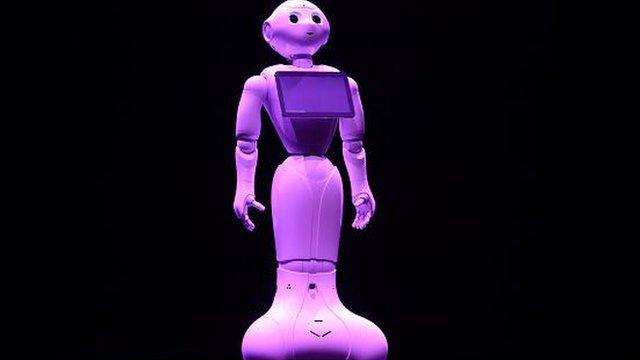
Pepper is getting a brain boost, thanks to IBM's Watson
Learning Japanese
IBM is keen to move Pepper out of the home and into other environments and over the last year it has been honing Watson's Japanese-speaking skills.
It hopes to see the robot used in shops as a personal shopper, in schools as a teaching assistant and as a nurse in hospitals.
Most agree that robotics, long dominated by industrial and logistics uses, is coming of age. A report from Business Insider predicts that there will be a $1.5bn (£1.04bn) market for consumer and business robots by 2019.
It was unclear how many of these would dance.
Ok, dancing robots aren't so bad. They may not get the chores done but they do make you smile. And I guess, at this embryonic stage of robotics, that is half the battle.
They beguile us with their cuteness and human-like qualities - perhaps to make up for the fact that they can't yet perform the functions we really crave from them.
- Published20 January 2016
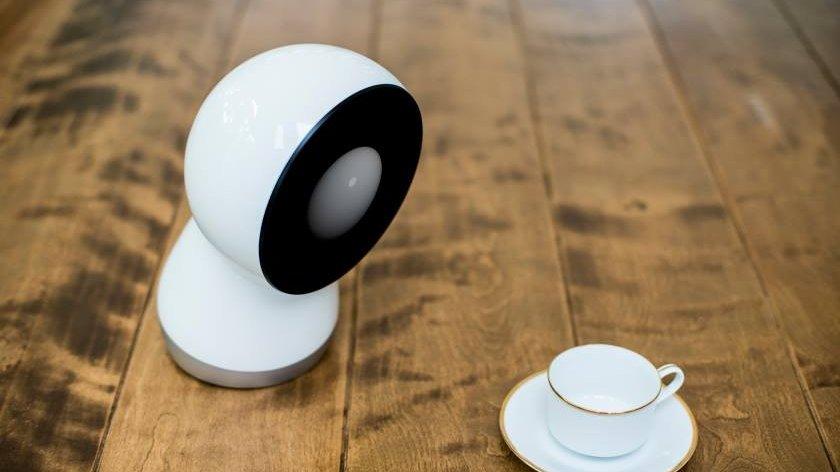
- Published7 January 2016
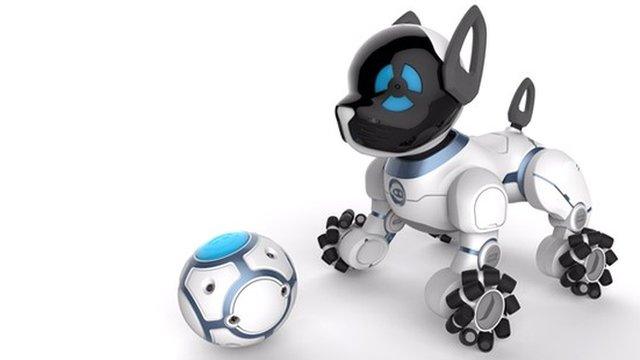
- Published1 January 2016
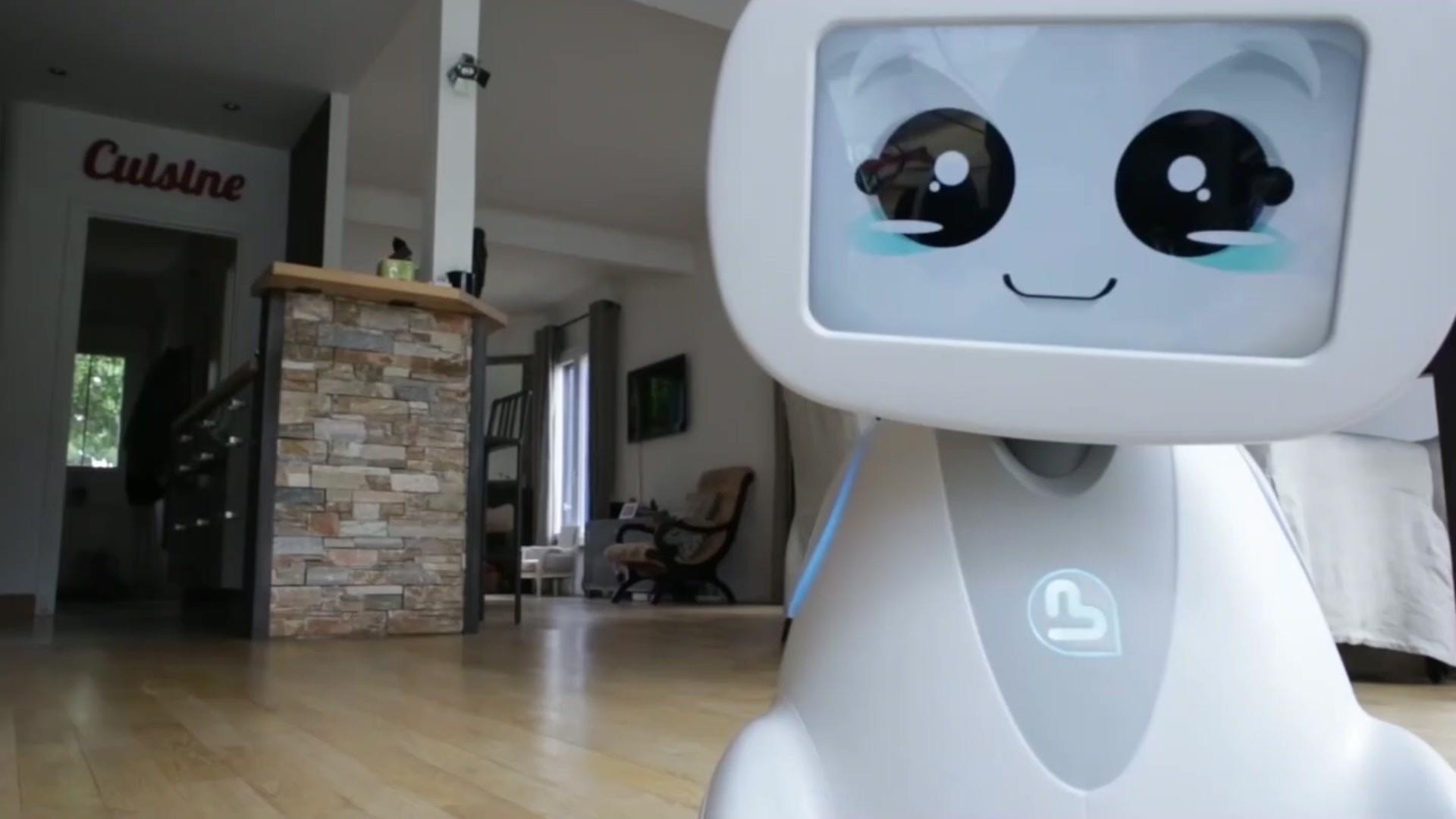
- Published13 October 2015

- Published16 October 2014
